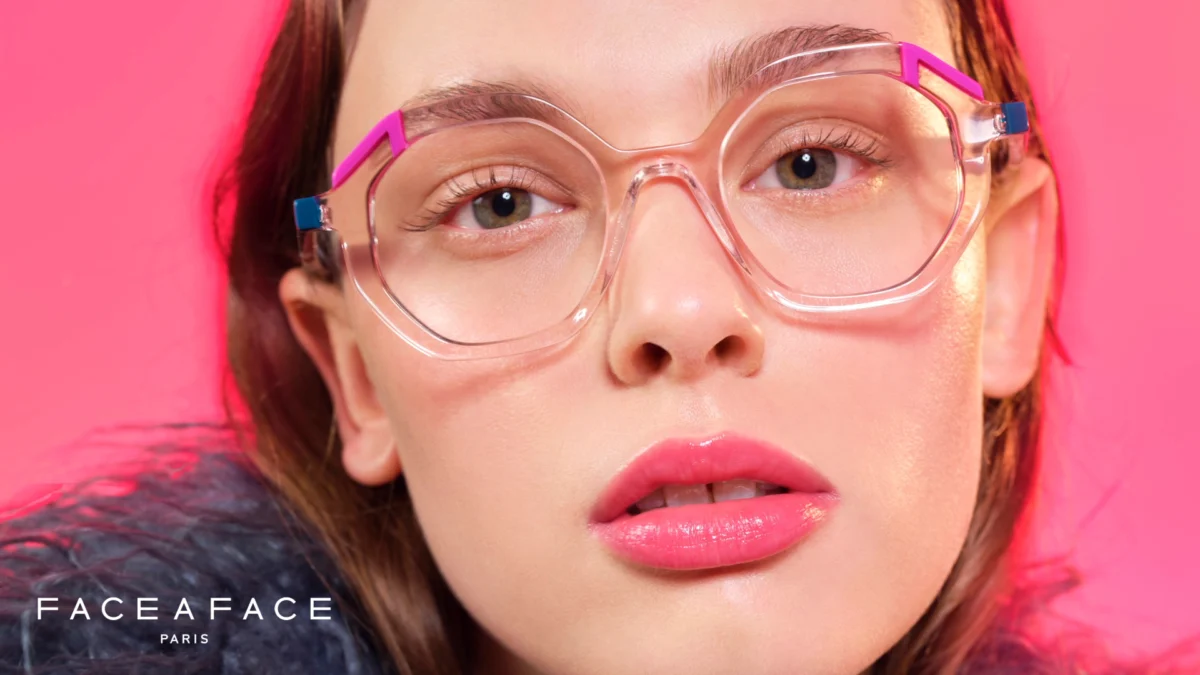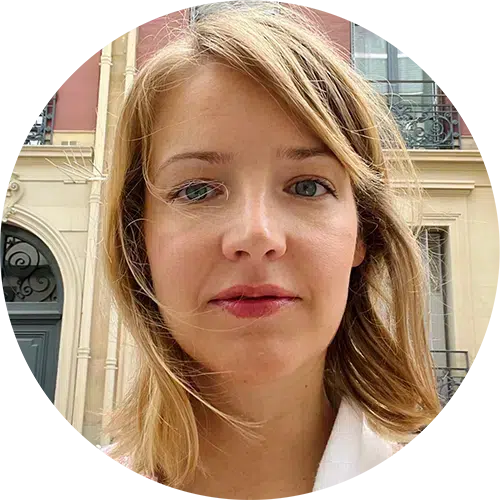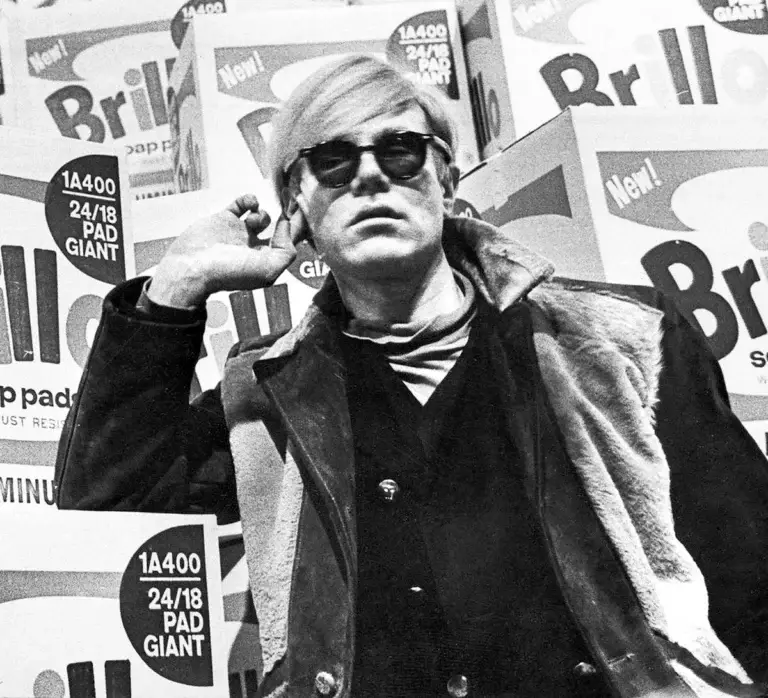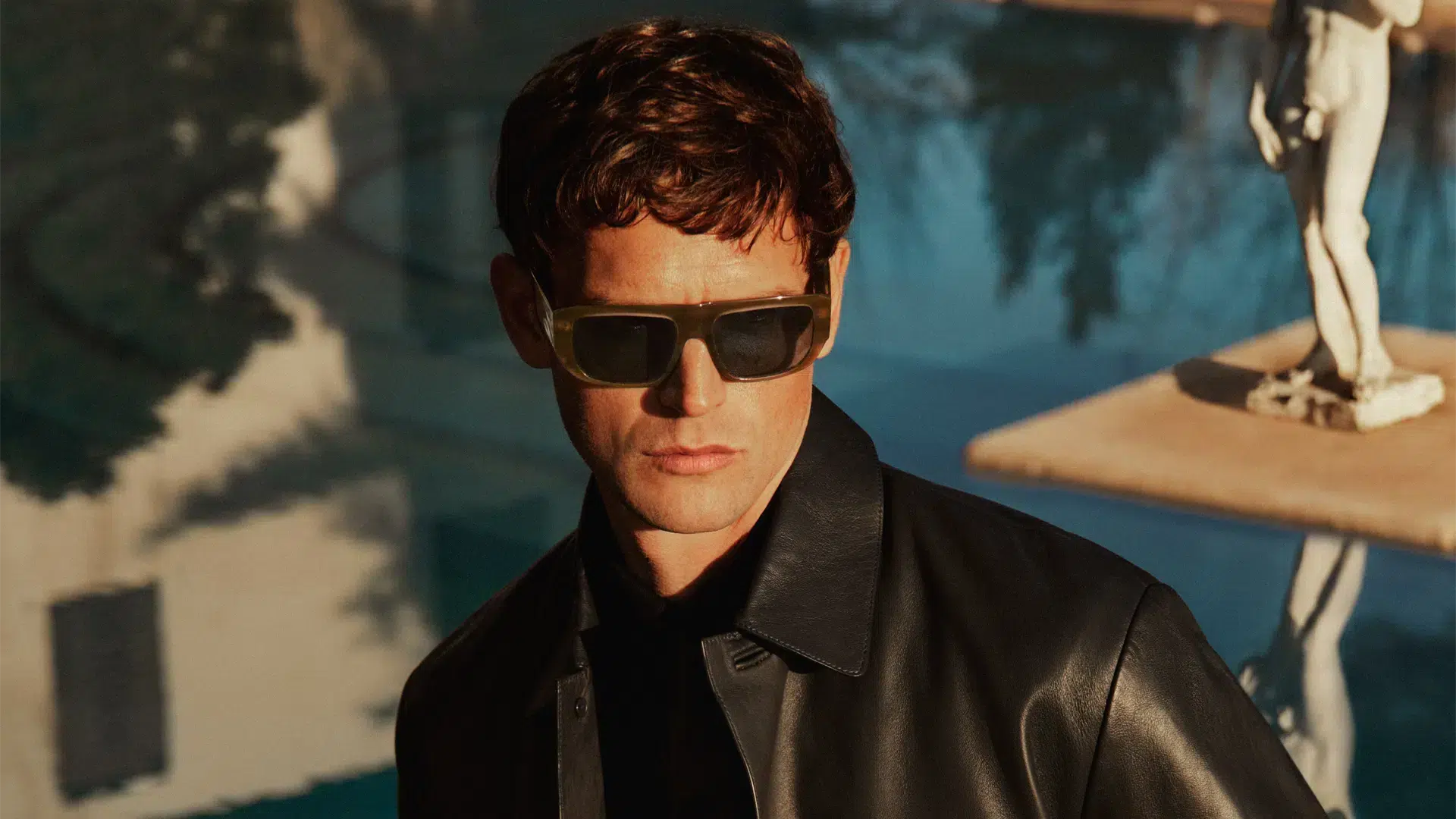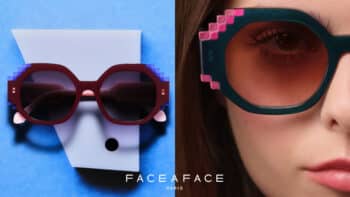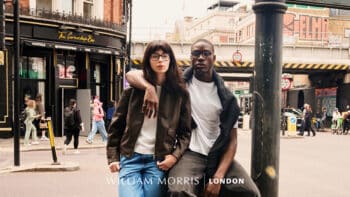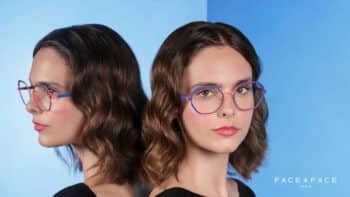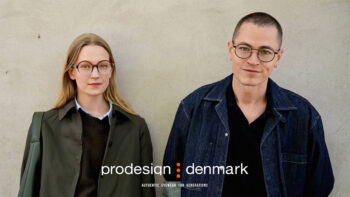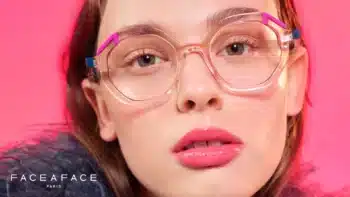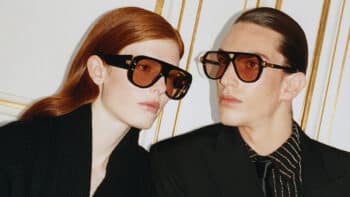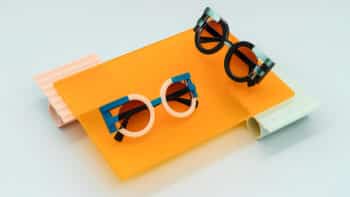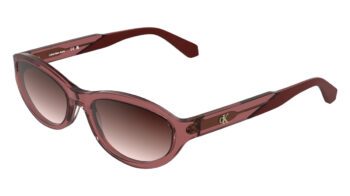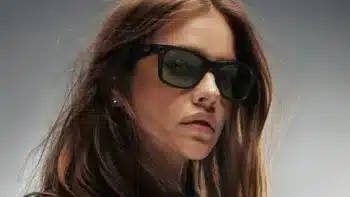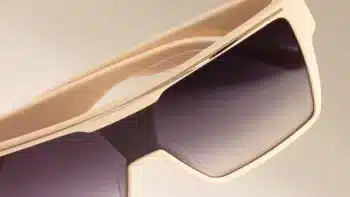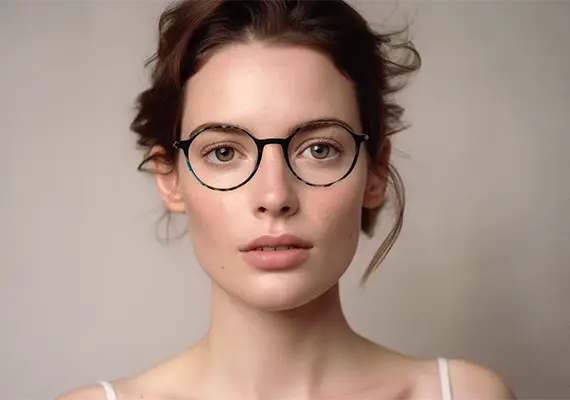The F Collection eyewear by FACE A FACE opens with a clear intention: giving shape to a freer, more expressive, more character-driven approach to design. From the very first line, the collection embraces a new visual language, blending retro influences with futuristic references. Each frame—FIZZ, FILL, FLARE, FLOW and FROST—explores a visual idea with its […]
Parisee -. Can you summarize the journey that led you to become an eyewear designer?
C. Ferreira –. I turned to design very early, starting with a high school diploma in Applied Arts. Then, I completed a BTS at École Boulle, followed by a DSAA at Olivier de Serres. After that, I earned a master’s degree in product design at the Royal College of Art in London. This allowed me to benefit from two different yet complementary approaches to design.
In France, the approach is sociological and conceptual. In England, design is approached in a more artistic and empirical way.
After my studies, I began my professional career as an eyewear designer at Face à Face. And I’ve been in this profession for fourteen years, evolving with the brand. In the meantime, Face à Face, which was an independent brand, joined the Design Eyewear Group. Today, this group develops and markets nine brands, and I co-manage the artistic direction of three of them.
Parisee -. In terms of design, what are the main challenges when creating a new pair of glasses?
C. Ferreira –. I see four main challenges. Without ranking them, I would start with the challenge of innovation, which is about breaking away from the “already seen.”
Then, there is the technical challenge, which involves pushing the limits of what manufacturers can achieve to meet the design objectives. For example, with the Face à Face brand, I really enjoy working with very sharp angles. However, technically, the polishing phase is the opposite of this approach since it aims to round everything out. So, we have to find ways to maintain or restore sharpness in the angles.
There is also a market challenge. Our brand has a strong international focus, so we have to imprint our style’s DNA while remaining compatible with different markets (sizes, colors, etc.).
Finally, eyewear design must meet a balance challenge. With each collection, the goal is to create a new concept—a shape of glasses that surprises and attracts. But we aim for this shape to be well-balanced, so that it is elegant, not caricatural, and comfortable to wear. At Face à Face, the “Framed” concept is a great example of how a strong expressiveness can meet perfectly balanced eyewear when worn.
Parisee -.Do all these constraints help boost your creativity?
C. Ferreira –. Yes, absolutely. The constraints around eyewear become opportunities for creativity! I remember that during my master’s degree, when we had to design with total freedom, it could sometimes lead to a creative block because there were too many possibilities. Constraints provide a framework in which a whole diversity of personalities can be expressed.
When designing glasses, just like in comic book drawing, every tenth of a millimeter contributes to shaping the expression. The slightest curve of a line can make the difference between a severe, friendly, or bold look.
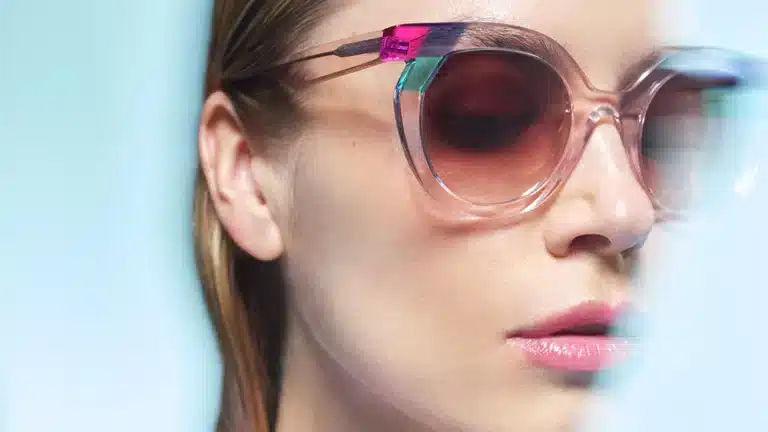
Parisee -. What’s the hardest constraint to manage?
C. Ferreira -. The challenge of innovation is the most difficult to tackle, as we strive to refresh collections while preserving the brand’s recognizable identity.
Parisee -. What are your sources of inspiration when designing a new eyewear collection?
C. Ferreira -. Our inspirations are varied. With our showroom located in the heart of Paris, we’re fortunate to find ideas in galleries, museums, or simply on the streets.
We closely follow contemporary art and fashion. Fashion Week shows, the “Première Classe” accessories fair at the Jardin des Tuileries, and Milan Design Week are essential events. But inspiration doesn’t stop there.
Because we’re passionate about what we do, we’re deeply immersed, and ideas can emerge at any moment.
Parisee -. In eyewear design, where can we still innovate?
C. Ferreira -. We can innovate everywhere! Innovation can occur on a technical level and/or an aesthetic level. However, we always align with broader trends. Thirty years ago, for instance, glasses were much smaller. Today, larger, thicker shapes and a more androgynous approach are trendy.
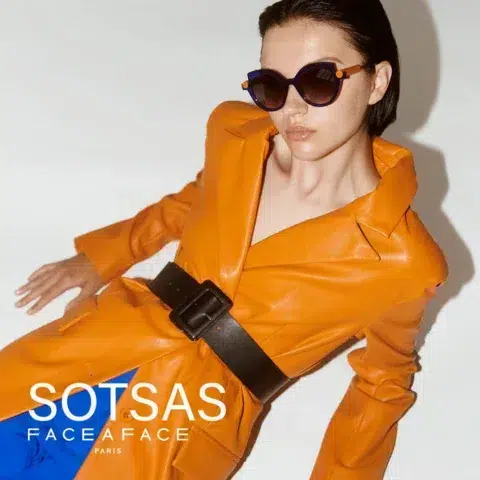
Parisee -. Could you tell us about a specific model you designed that you’re particularly proud of?
C. Ferreira -. I’m especially proud of the Sotsas model from FACE A FACE, inspired by the work of Italian designer Ettore Sottsass. For this model, we aimed to merge eyewear and sculpture, drawing from Sottsass’s vibrant color style and playful expressiveness. The arm design revisits a cylindrical armrest principle used by Sottsass for a sofa. It was a technical challenge to attach a round shape to the hinge and integrate it into the arm structure. Aesthetically, its design also stands as one of the brand’s iconic models. Both surprising and elegant to wear, we later adapted the concept into a more refined optical version called Kyoto.
Parisee -. Do you believe it’s possible to design glasses that suit everyone?
C. Ferreira -. Some brands aim to create universally appealing glasses. As a designer brand, we inevitably take risks with bolder choices that may either spark a genuine love or a strong dislike. However, we strive to create fresh aesthetics within a framework that appeals to a broad audience. For this, we follow a sort of “universal template,” with proportions and line shapes that resonate with many.
Parisee -. It’s always hard to decide on a new pair. Do you have any advice for determining if glasses look good on someone?
C. Ferreira -. People often ask me, “What would suit me?” And I have to say I’m not a stylist. To see if a frame suits you, several factors come into play, some of which are very personal.
The frame should fit your face shape. Here, I can offer solid advice: it’s always preferable for the pupil to be horizontally centered in the lens. If you have a large face and prefer small glasses, it’s easier to go with round shapes. Square or rectangular frames should be proportionate to the face size. For a slender face, there’s more freedom. By opting for large glasses, you immediately adopt a trendier style.
In any case, give yourself time to embrace the change without making a hasty decision. Find a model where you feel you can express your personality while recognizing yourself. Glasses shouldn’t be a disguise but rather a tool to express yourself.
Parisee -. What are the iconic eyewear shapes that have marked the history of eyewear design?
C. Ferreira – I think of a period when eyewear transitioned from a medical object—a metal pince-nez used for holding corrective lenses—to the “glasses” seen as a new means of identity and expression.
Since the second half of the 20th century, eyewear has become a true fashion accessory. This shift began in the early 1950s with the Wayfarer, which broke away from the aviator shape by creating a new, now-iconic form.
In the 1960s, the trend grew, with eyewear design becoming bolder, worn by personalities like Jackie Kennedy, Yves Saint Laurent, Andy Warhol, and Grace Jones. Examples abound, such as John Lennon’s legendary round glasses.
Parisee -. And today, what strong trends are emerging?
C. Ferreira – More recently, I’d point to the trend of “Matrix” glasses, with very flat and sharp shapes that are making a strong impression at Fashion Week and are on their way to becoming iconic. Another example would be the Pantos, with its clean, round shape, which has established itself as a timeless classic.
However, in the designer eyewear world, we’re increasingly moving away from predefined shapes like round or aviator. Today, you can find hexagonal shapes or a more polymorphic approach, combining different shape types.
Parisee -. Beyond commercial success, what defines design success?
C. Ferreira – In a different field, we can take the example of Eames chairs. Their success lies in their perfect understanding of the object, resulting in a distinctive aesthetic and an iconic form.
Parisee -. The Design Eyewear Group collaborates across Denmark, England, and France. Are there any specific design sensibilities from each country?
C. Ferreira –While avoiding stereotypes, there are noticeable regional sensitivities. We see this within our three design teams.
In Denmark, function drives form, with a minimalist and radical design philosophy akin to “less is more.”
In France, the approach is more Latin, bolder, and freer, with a strong focus on concept and storytelling.
In England, the focus is on the final wearer’s style. New shapes are inspired by street fashion.
Parisee -. Do these consumer preferences vary?
C. Ferreira -. Yes, we respond to an international market, taking these differences into account.
In the U.S., consumers often prefer classic, rectangular, or butterfly shapes. American clients tend to choose more conventional products that don’t require much risk-taking.
On the other hand, Spanish, Italian, and French customers often seek taller, more square, and colorful frames.
This is why all our models come in two shapes and six colors. These various options allow us to cater to each preference with several choices.
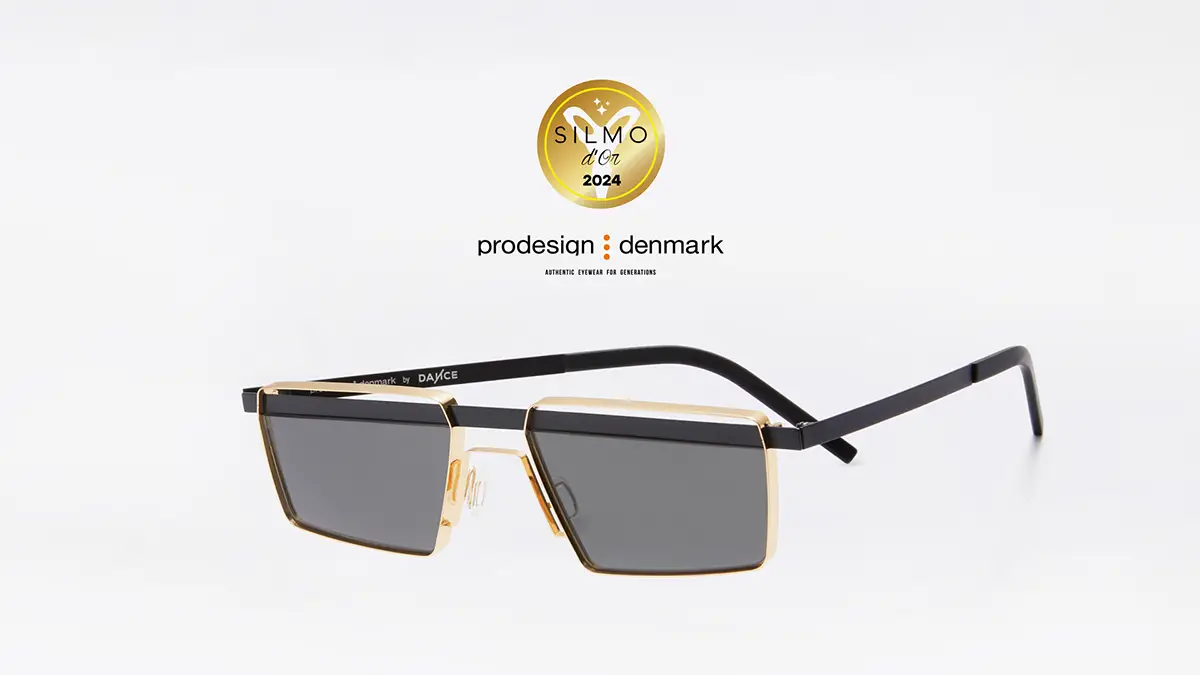
Meeting Claire Ferreira brings us into the heart of the optical design world, where each collection becomes an artistic exploration. If this interview inspired you, be sure to also read our article on Dance by Design Eyewear Group.
Further reading :
WOOW Let’s Play: the eyewear collection that breaks the rules
WOOW Let’s Play is the new eyewear collection by Design Eyewear Group, created for those who love to push boundaries and play with style. More than a functional accessory, these frames are designed as a playground of creativity — blending transparency, color, and bold shapes to reinvent the way we wear glasses. Inspired by the […]
William Morris London Glasses: Luxury, Creativity, and London Identity
William Morris London glasses embody a unique encounter between British heritage and modern design. Since its very first collection, the brand has drawn inspiration from London’s most iconic landmarks to create eyewear that blends timeless elegance with contemporary flair. Balancing discreet luxury, bold creativity, and a distinctly London identity, these glasses appeal to both fashion […]
Face à Face F Collection: Sculptural Eyewear with a 3.0 Vision
A Vision Already Set on Tomorrow The Face à Face F Collection is a radical reinvention of designer eyewear. Drawing on 30 years of avant-garde style, the French brand celebrates its entry into the 3.0 era with a collection that blurs the lines between art, design, and technology. Each frame is sculptural—like a letter in […]
Prodesign Denmark 2025: SPARKLE and SIGNIFIC Take the Spotlight
Prodesign Denmark launches its 2025 season with collections that push the boundaries of Danish design. True to its artisan roots and aesthetic precision, the brand introduces frames that blend personality, structure, and comfort. The spotlight is on SPARKLE and SIGNIFIC — two bold collections redefining expressive eyewear — alongside the technical innovation of PROFLEX ACE. […]
JOOP!, Morgan, Jaguar… Design Eyewear Group makes a bold move
Three iconic names, one strategic acquisition: Design Eyewear Group just expanded its universe by welcoming JOOP!, Jaguar, Morgan, and MENRAD into its brand portfolio. A power move that’s redefining the high-end eyewear landscape, in Europe and beyond. A new era for European eyewear Headquartered in Aarhus, Denmark, Design Eyewear Group is already known for its […]
